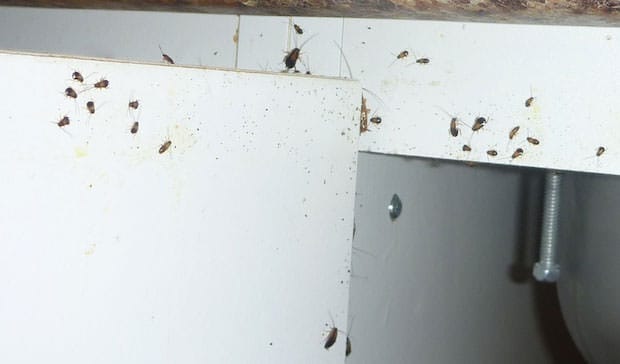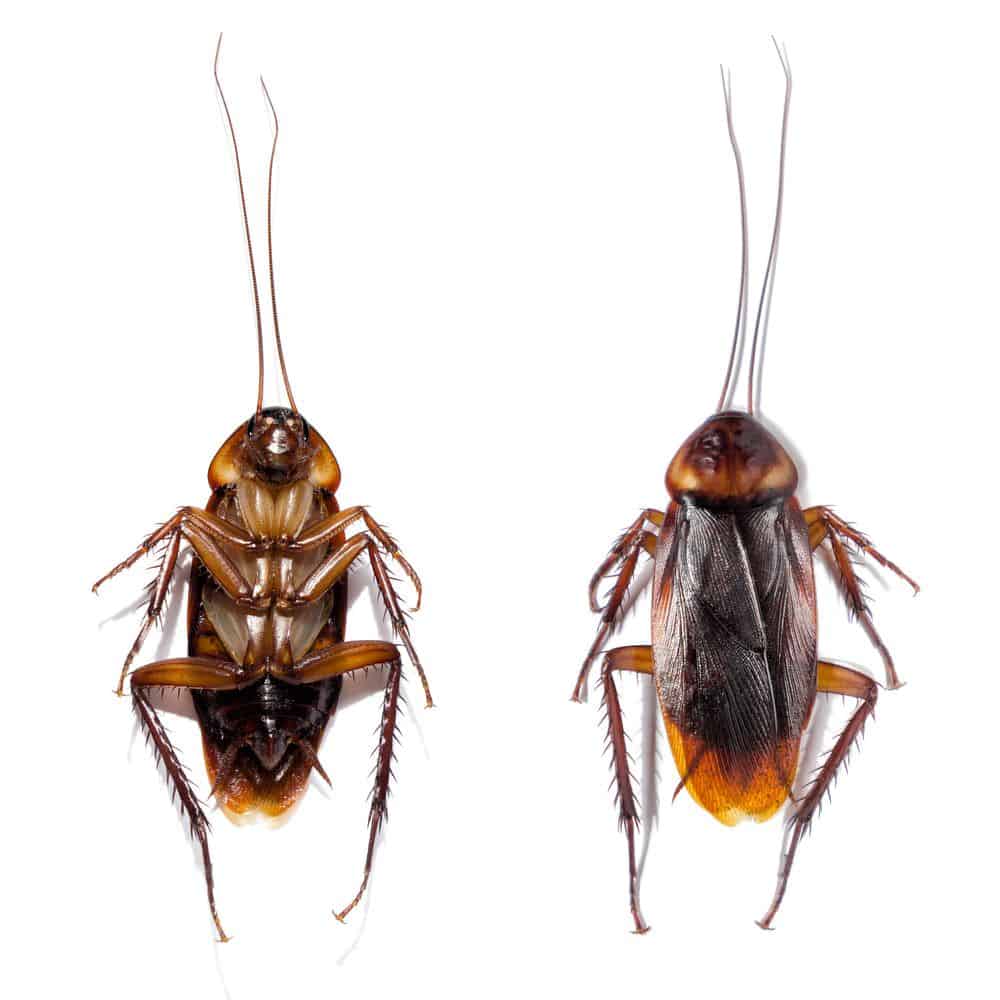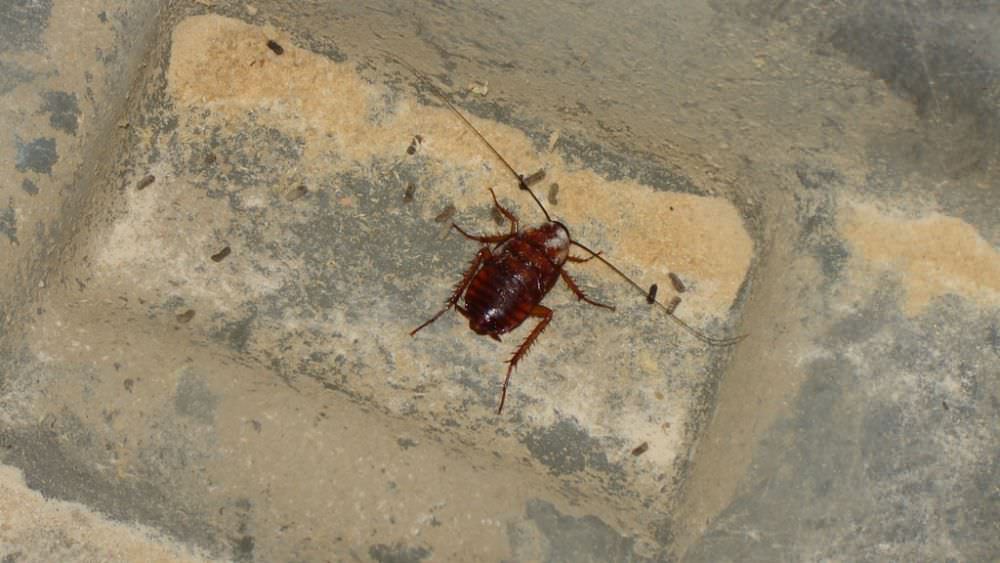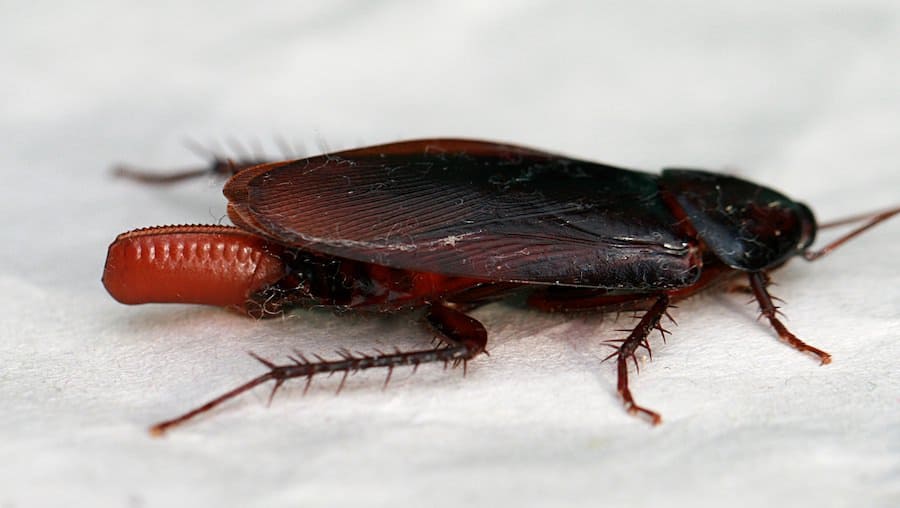Madagascar Hissing Cockroach
The Madagascar hissing cockroach is not your everyday roach. This bug is, without a doubt, one of the most captivating cockroach species out there.
What Do Madagascar Hissing Roaches Look Like?
The scientific name for the Madagascar hissing cockroach is Gromphadorhina portentosa. This giant bug can grow to an immense size of 3 to 4 inches and a weight of over 0.8 ounces. They can live for between two and five years.
These roaches have an oval-shaped body, with a shiny, brown exterior. Their heads are darker, sometimes black. Towards the end of their body, the color becomes lighter, almost yellow.
Horns & Hissing
Both males and females have two protrusions on their prothorax (a body section found on wingless insects). These bulges work as horns on the males, where they appear much more conspicuous.
Often, at first glance, you may think these bumps are eyes. The head and eyes are, however, hidden under the prothorax, which keeps them protected.
On account of their horns, males look quite impressive. They use them during mating rituals. These battles for love can become pretty aggressive as the males fight each other to win the female. During these competitive encounters, the roaches ram one another, aiming for the abdomen. The winner will promptly unleash his immense hiss to mark his victory.
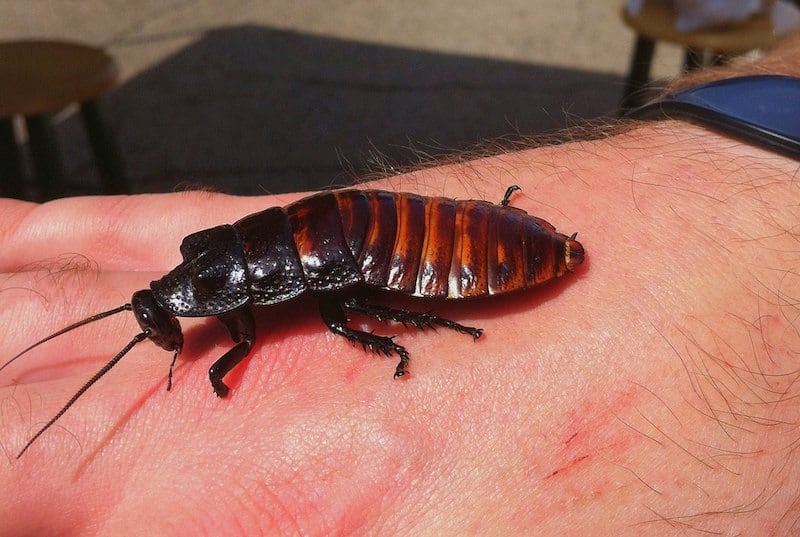
The unique hissing sound that these cockroaches make can also work as an alarm cry. Roaches are family insects. They don’t like staying alone and once danger approaches, they sound the hiss to warn others.
Females and nymphs (youngsters) only make the hissing sound when disturbed, or in fear of danger. Most people who have ever handled this type of roach have probably heard its hiss while moving or touching it. With that being said, these cockroaches are often perceived as mellow and easy-going when around humans.
The noise that the Madagascar hissing cockroach makes is not like that of any other insect. Usually, bugs such as crickets and cicadas, make their noise by rubbing specific body parts together or using a vibrating membrane. This cockroach does things a little differently.
Madagascar hissing cockroaches use their breathing holes. This species will exhale air through modified pores, or spiracles, located on their abdomen. The roach forcibly emits the air, and upon exiting, it creates that signature hiss.
Behavior
Males are generally aggressive and quite territorial. They often choose to occupy holes in logs, trees or other structures, where they will fight off any intruding males. Females, on the other hand, are social insects. Females and youngsters will typically gather around one male, where they will stay as a small family or community.
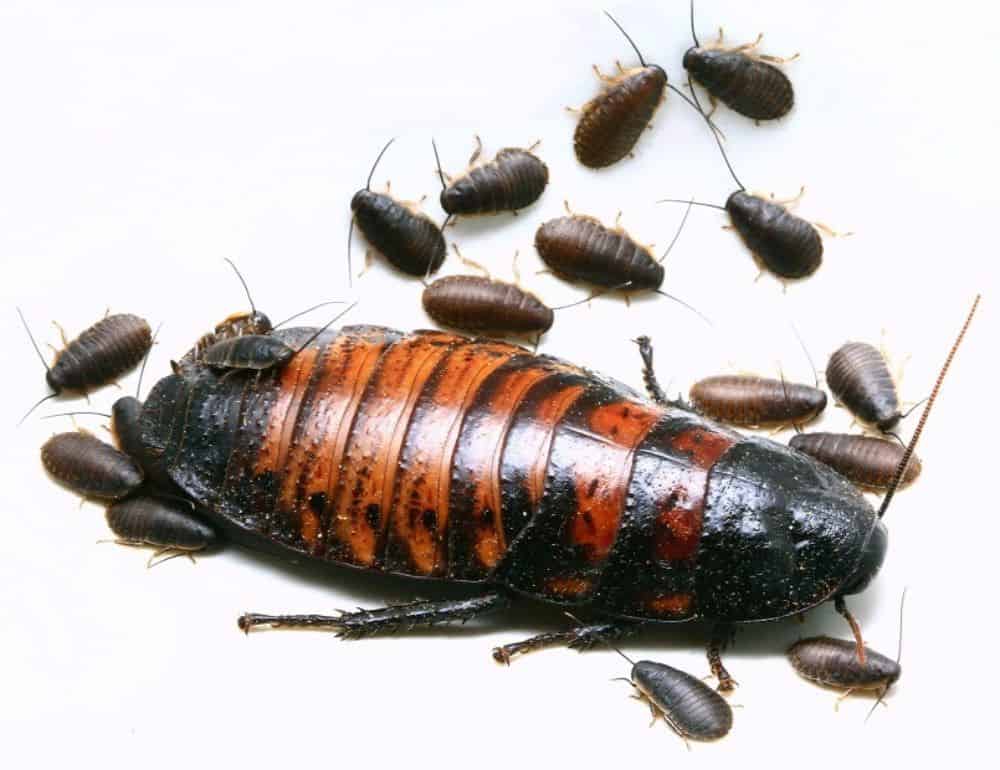
Madagascar hissing cockroaches are, like many other species, nocturnal. They come out during the night to scavenge for food. However, males are known to occasionally prowl while the sun is up.
Fighters or Lovers?
Interesting new research revealed that not all of the hissing cockroaches are aggressive fighters. The smaller males, who often lose the love battles, have adapted their bodies in other ways to impress the females. This would be to compensate for their less-than-impressive size.
These males have shorter horns, but they have been able to grow larger testicles. More pronounced testes show the females that they are extra fertile. Because of this, the ladies may choose to mate with these lover boys instead.
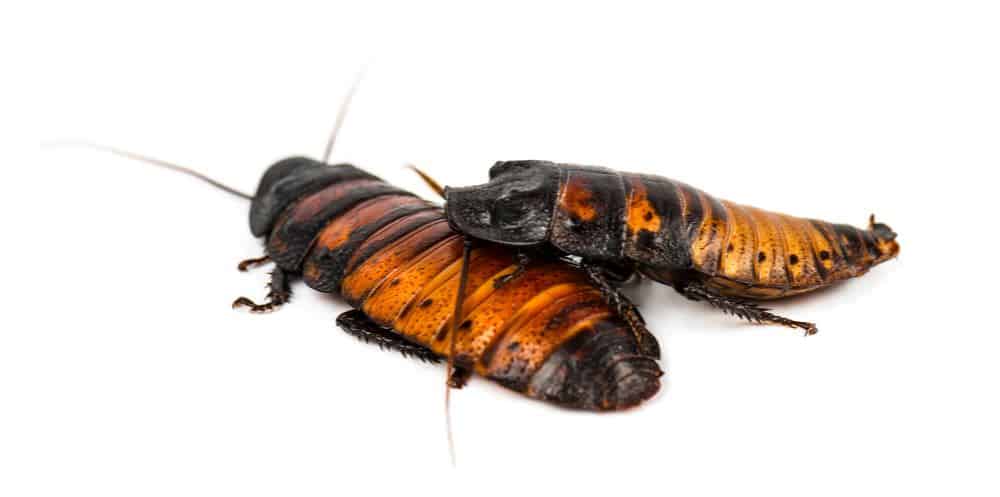
Antennae
The antennae on males and females look a bit different. The antennae of the male are quite furry and thick, particularly toward the base where they attach to the head. On females, the antennae are more delicate in their appearance.
Based solely on the look of the antennae, it can be tricky to tell the males and females apart, unless you use a microscope. The differences aren’t so evident to the naked eye, unless you know what to look for. Looking at the size of the protrusions is a much better way to distinguish between the sexes.
Can They Fly?
Madagascar cockroaches do not have wings and therefore, cannot fly. This species of roach is one of the largest in the world and instead of flying, they are excellent at climbing.
Whether on smooth, vertical surfaces, across rocks or trees, they are the mountaineers of insects. Their feet are padded, which helps them grab on to a variety of surfaces, in order to climb. Due to their climbing abilities, they often escape from containers.
Where Do Madagascar Hissing Cockroaches Live?
Experts still know very little about the geography of this giant roach. What we do know is that it originates from Madagascar, where it likely thrives on the forest floor, among rotten logs and leaves.
This species, unlike the American and German cockroaches, is not considered a pest to humans. These critters never infest human habitations. Governments do not regard this cockroach as an annoyance.
One of the ways these cockroaches get about is by human transport. They are frequently transported cross-country, yet sometimes escape. More often than not, when we discover one of these crawling around our premises, we are actually looking at someone’s missing pet. More on that later.
Diet
These roaches, within their natural surroundings, will usually feed on any fallen fruit along the forest floor. They can also feed on other plant materials, although they prefer the sweetness of the fruit.
Males and females will yet again show a bit of difference when it comes to their diets. Males often feed on fruits, while females tend to seek out items containing more protein. This is probably due to reproduction, which means they need extra nutrients to develop their young.
Reproduction
The hissing cockroach also has a unique way of producing their offspring. The male will glide his body along the abdomen of the female until he reaches her end, where he can inseminate her. The females are “ovoviviparous,” which means the eggs remain in the body until they’re ready to give birth, as opposed to laying the eggs. She will carry the eggs within her abdomen, where they will evolve into nymphs.
The female can carry up to 60 eggs at a time, depending on her size. After approximately 60 days, they emerge as nymphs. During the nymph stage, the offspring undergo about six molts, where they change their skin to accommodate their larger size. This may take them as long as seven months before fully maturing.
Why Do Some People Keep Them as Pets?
Purposely wishing to keep a cockroach in the house is probably not at the top of everyone’s Christmas list. There are, however, many people who enjoy studying these wonderful creatures, just as some enjoy having a snake slithering about their room.
These are not the cuddliest of pets, but they are not known to bite or show aggression toward handlers. You can easily buy a pair from Amazon. Yes, apparently they come in a set of two.
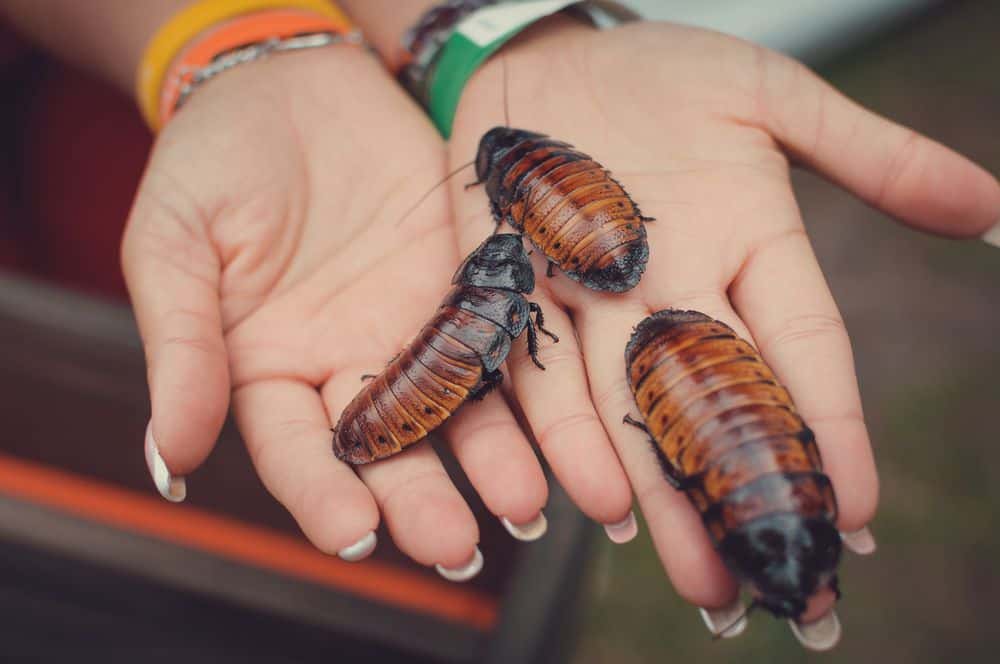
Madagascar hissing cockroaches are, in many ways, a fascinating species. The sound they make and their massive size makes for one impressive insect. This cockroach’s mellow nature towards humans makes it the perfect candidate as a first-time insect pet. Owners often describe them as easy to handle and rather docile.
Care and Feeding
They are very easy to maintain and require only a weekly feed. The food which you can offer them is, generally, something you may already have in your home. A variety of fruits and vegetables is best, in particular leafy greens. They also love to munch on dog food, especially the females, since it contains a fair amount of protein. Mouse chow is another option.
Fish tanks make for excellent cockroach containers. Depending on the size, you can likely accommodate several of these roaches comfortably. Just remember that they need space. You will also need a compatible lid. Fish can’t glide up the edges and escape, but these roaches will as they are competent climbers. You can use petroleum jelly to seal off any cracks there may be, not the breathing holes though. Make sure that oxygen can reach them.
Wood shavings are a suitable base. Fill the bottom about 1 to 2 inches deep. Avoid using woods like cedar and pine. These are far from what they would find in their natural habitat, and the cockroaches generally don’t like them.
The last thing you should make sure to include in the container are hiding spots. These pets are nocturnal, therefore, they prefer hiding during daylight hours. Anything that provides some shelter will do. You can easily use a cardboard toilet paper roll, egg cartons or small cardboard boxes.
As the Madagascar cockroach is a tropical insect, they thrive in toasty temperatures. Keep the container at around 70 to 90 degrees Fahrenheit. Place the food within the cage at least once a week. You can alternate between dog food and fruits or vegetables. These cockroaches seem to love carrots, by the way. Don’t worry if the food isn’t fresh.
You will also need to place a source of water: a small dish will do. Place some cotton balls to soak up the liquid and avoid an unfortunate drowning. Refresh the plate every week to keep your Madagascar hissing cockroach happy and hydrated.

